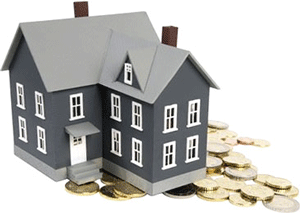
Mortgage Down Payment
From a low down payment mortgage to using your Registered Retirement Savings Plan (RRSP) as a source of funds, buying a home has never been easier.
The down payment is that portion of the purchase price you furnish yourself. The balance is obtained from a financial institution in the form of a mortgage. The amount of the down payment (which represents your financial stake, or the equity in your new home) should be determined well before you start house hunting.
Conventional MortgageA conventional mortgage requires a down payment of at least 20% and is offered on either a fixed or variable interest rate basis. Conventional mortgages have the lowest carrying costs because they do not have to be insured against default.
Low Down Payment Insured MortgageMost lenders now offer insured mortgages for both new and resale homes with lower down payment requirements than conventional mortgages-as low as 5%. Low down payment mortgages must be insured to cover potential default of payment; as a result, their carrying costs are higher than a conventional mortgage because they include the insurance premium.
Mortgage default insurance is a one time premium paid when your purchase closes. You can pay the premium or add it to the principal amount of your mortgage. Talk to your mortgage specialist to find out which option is best for you;
Using Your RRSP as a Down PaymentUnder the federal government’s Home Buyer’s Plan, first-time home buyers are eligible to use up to $25,000 in RRSP savings per person ($50,000 for couples) for a down payment on a home. The withdrawal is not taxable as long as you repay it within a 15-year period. To qualify, the RRSP funds you plan to use must have been in your RRSP for at least 90 days.
Even if you already have enough money for your down payment, it may make sense to access your RRSP savings through the Home Buyers’ Plan.
For example, if you have already saved $25,000 for a down payment-and assuming you still had enough “contribution room” in your RRSP for a contribution of that amount, you could move your savings into an RRSP at least 90 days before your closing date. Then, simply withdraw the money through the Home Buyers’ Plan.
The advantage? Your $25,000 RRSP contribution will count as a tax deduction this year. Use any tax refund you receive to repay the RRSP or other expenses related to buying your home.
However, the money you borrow from your RRSP won’t earn the tax-sheltered returns it would if left in your account. Ask your financial planner if this strategy makes sense for you.
